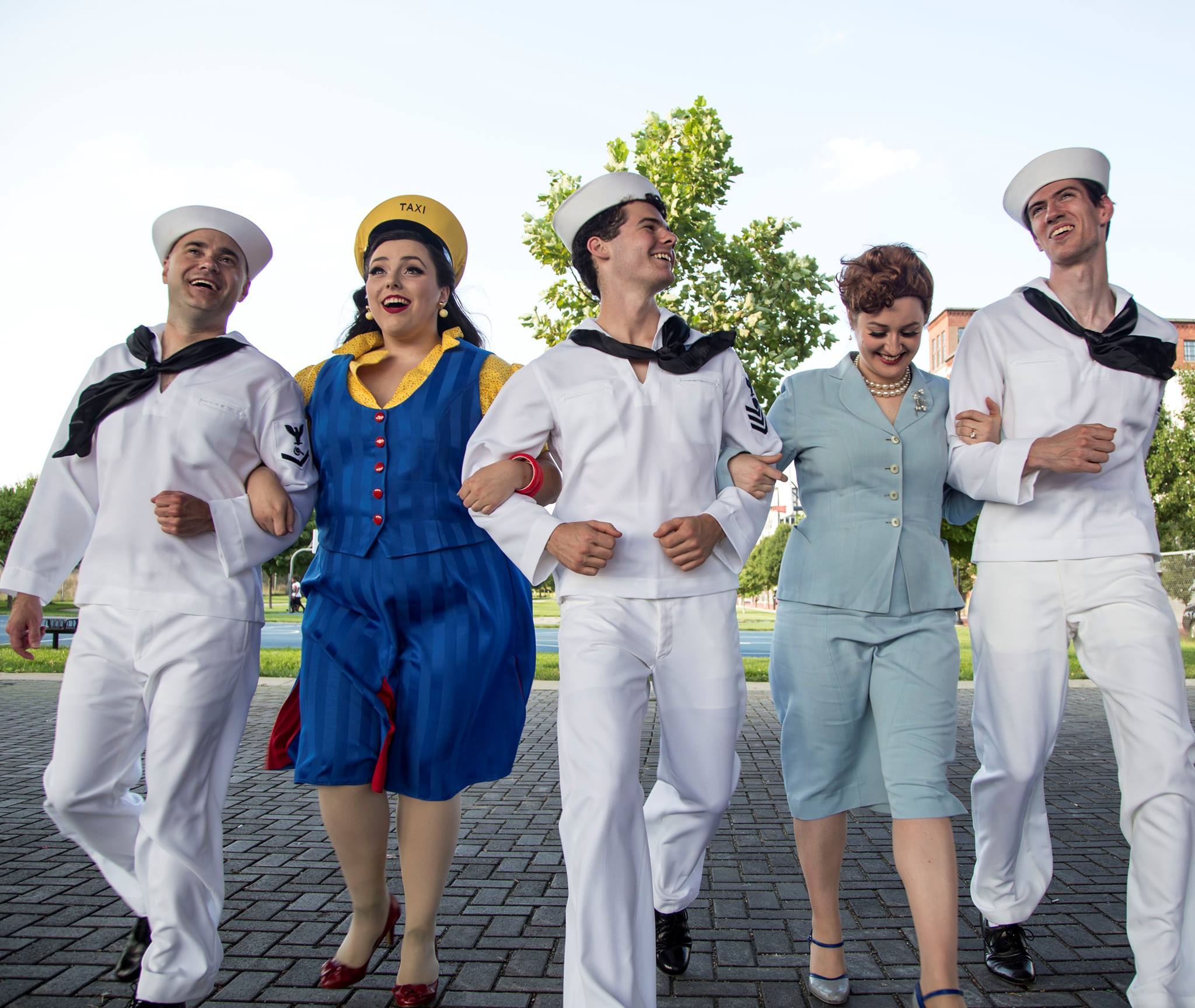The genius of the creative collaboration between composer Leonard Bernstein and choreographer Jerome Robbins, two legends in their own right, is perhaps more lasting than love. That is, if we are to believe the larger theme of “On the Town,” the grand 1940s musical they created together based on their previous ballet, “Fancy Free.”
Just last spring, the San Francisco Ballet did an entire program of Robbins’ choreography, and The Gilmore International Keyboard Festival in Kalamazoo offered several Bernstein programs, both of which featured numbers from “Fancy Free” and “On the Town.” And now, Circle Theatre is closing their season with a delightful, fully-staged production of “On the Town,” with a live orchestra playing what have now become such tremendous classics of the American songbook, they’re likely familiar even to those unfamiliar with the show—shot through with really lovely Robbins’ inspired choreography—in a fun and sexy old-fashioned story full of surprisingly bold characters and strong performances.
Perhaps most widely known for the 1949 film adaptation starring Frank Sinatra and Gene Kelly, the story revolves around three sailors on 24-hour shore leave in New York City in search of female companionship. It’s a cartoonishly colorful celebration of 1940s America, a dramatic distraction from the brutal realities of World War II, in which boys will be boys and women are dames. The sweetly naive sailors each quickly meet their matches to discover more than they bargained for in their single day of freedom in the Big Apple.
In Director Penelope Notter’s vision, the women are stronger characters than the men, though the six leads complement each other beautifully in this well-chosen cast. Mary Kate Murnan is a powerhouse as belter Hildy who seduces wide-eyed comical Chip (Davin Lepisto) in her taxi with “Come Up to My Place,” and once she gets him there with “I Can Cook Too,” they’re wonderful together.
Likewise, Chelsea Herrema’s Claire is a man-hungry anthropologist who unsuccessfully channels her obsession with the masculine form into scientific studies. But when she encounters Ozzie (Jonathan Calkins) in the Museum of Natural History, she cannot resist his resemblance to the Neanderthal on display. Herrema and Calkins have terrific chemistry and gorgeous voices together, particularly in the very funny and equally lovely “I Get Carried Away.”
The “straight” couple are less comical and bold, though no less a joy to watch, as their romance is the storybook one, told exquisitely and largely through dance. Whereas the other two love stories bend gender stereotypes, Gabey and Ivy’s longing and eroticism emerges in the lexicon of classical ballet, which heightens and glorifies the drama of the masculine-feminine binary more effectively than any other art form.
Owen Gelder’s Gabey and Mia Van Erp’s Ivy communicate depth of emotion in gorgeous pas de deux sequences choreographed by William Schutte that provide a throughline for the overall story. They long and pine for each other, she’s just out of his reach, then they fight in a makeshift boxing ring, until they finally, sweetly merge with elegant lifts and weight sharing. They’re both technically skilled and wonderfully expressive dancers who create tremendous electricity and eroticism in a stunning display.
Schutte’s excellent choreography also includes tap, soft-shoe and jazz, in addition to the challenging classical ballet, at times en pointe, and the cast make it all seem effortless. The men, especially, are impressive in their execution of leaps, turns and perfect extensions in tandem. And arm motifs — the tourist’s straight-arm point, the masculine bicep curl, and the holding of a subway strap — keep place and theme present throughout the show.
Catherine Marlett Dreher’s lights are especially effective in highlighting the dance, and Don Wilson’s set — a city skyline painted in a circle on the floor and a few carefully chosen set pieces moved quickly on and off stage — allows for fast scene transitions, clear delineation of space, and the perfect conditions for grand, swelling numbers such as “New York, New York” as well as the more intimate and comic duets. And Bill Dunckel and Kelly Lucas’s bright and joyful period costumes as well as Scott McGuire’s wigs bring to light the World War II era as well as its feisty characters.
“On The Town” is clearly a period piece, and though Circle Theatre’s production thoroughly glorifies its original assets — music, choreography and characters more than plot — without attempting to update or otherwise reinterpret this musical, there is something forward thinking in the larger message: find the joy in life as it comes and accept the ephemeral nature of love and relationships. If 24 hours is all you’ve got, go after it with gusto — sing it, dance it and make it as colorful as you can.
On the Town
Circle Theatre
Sep. 6-22
circletheatre.org





